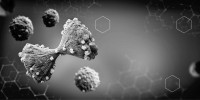
Exploring How Breast Cancer Defies Radiation
Explore the latest research uncovering why certain breast cancer cells withstand radiation therapy. Led by experts at University Hospitals Seidman Cancer Center, this study sheds light on the molecular mechanisms of resistance, offering hope for more effective treatment strategies.
Examining Breast Cancer's Resilience to Radiation
A recent study by the Department of Radiation Oncology at University Hospitals Seidman Cancer Center and Case Western Reserve University explores how specific breast cancer cells are able to withstand radiation therapy, a crucial component of the post-surgery treatment plan. This research provides an in-depth look at the transcriptomic and proteomic shifts occurring in breast cancer cells post-radiation, setting the stage for the development of more tailored and effective treatments.
Delving into the Study's Core
The Objective Unpacked
The primary aim of this research is to dissect the molecular mechanisms that underpin radioresistance in breast cancer cells. By comparing gene and protein expressions in cells exposed to radiation therapy, the team seeks to identify what distinguishes resilient cells from those that succumb.
Methodology at a Glance
Employing advanced techniques such as clonogenic survival assays, RNA sequencing, and Reverse Phase Protein Array analysis, the research meticulously assessed the reactions of various breast cancer cell lines and in vivo mouse models to radiation.
Unraveling Key Insights
The Diversity in Cellular Response
A critical finding from the study is the varied sensitivity to radiation observed across different breast cancer cell lines, indicating that radioresistance does not correlate strongly with the cancer's intrinsic subtype. This highlights the complexity of breast cancer's response to radiation therapy.
Molecular Pathways and Radioresistance
Significant alterations in specific pathways were noted in radioresistant models. The authors conclude:
 RT induces transcriptomic and proteomic expression changes that differ between intrinsically sensitive and resistant and luminal vs. basal BC models in both single fraction and fractionated studies.
RT induces transcriptomic and proteomic expression changes that differ between intrinsically sensitive and resistant and luminal vs. basal BC models in both single fraction and fractionated studies.
This detailed understanding of the molecular alterations provides a roadmap for targeting these mechanisms therapeutically.

Toward Future Therapeutic Approaches
Identifying Targets for Intervention
The study not only sheds light on the molecular pathways altered in the face of radiation but also identifies potential targets for intervention. By understanding the pathways involved in cell cycle regulation, estrogen signaling, and more, researchers can develop targeted treatments to counteract the survival strategies of breast cancer cells.
The Path Forward
With these findings as a foundation, the research team is moving forward with genome-wide CRISPR/Cas9 screens to validate and refine these potential therapeutic targets in breast cancer models.
Conclusion
This research enriches our understanding of the molecular dynamics that enable breast cancer cells to resist radiation therapy. By uncovering the mechanisms of radioresistance, the study opens avenues for the creation of more personalized and effective cancer treatments.
As the research progresses, these insights hold the promise of leading to improved strategies for combating breast cancer, ultimately enhancing patient outcomes in the face of this challenging disease.